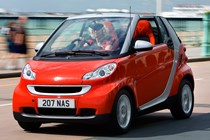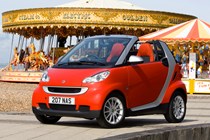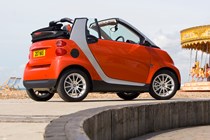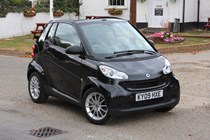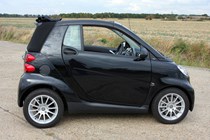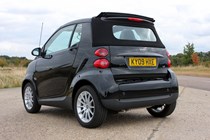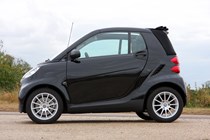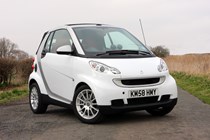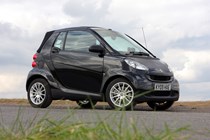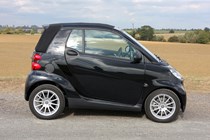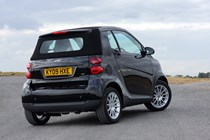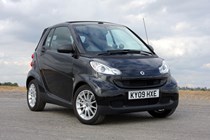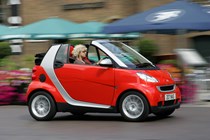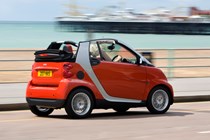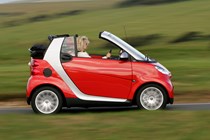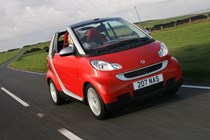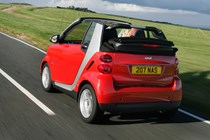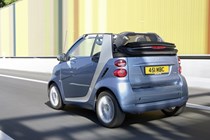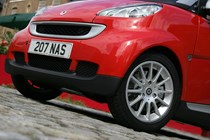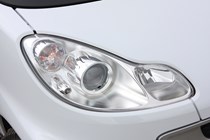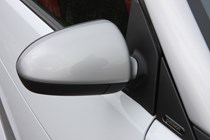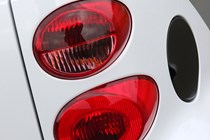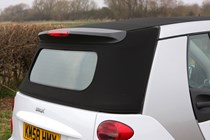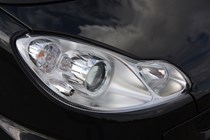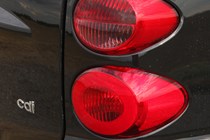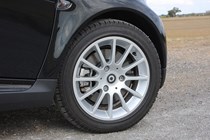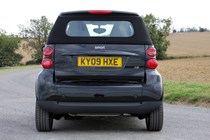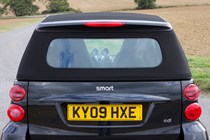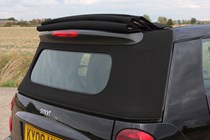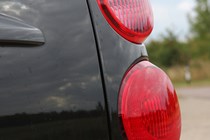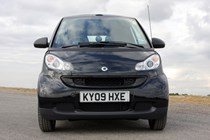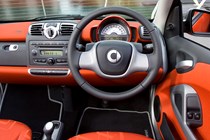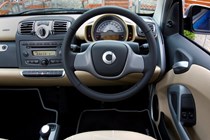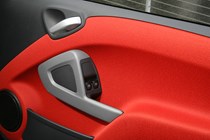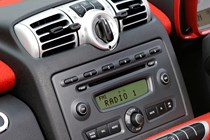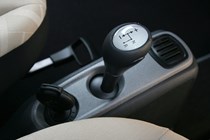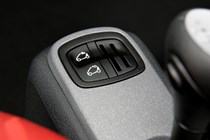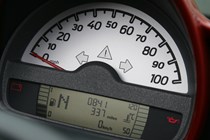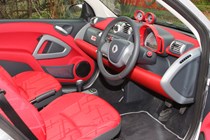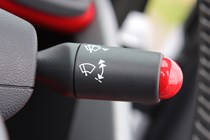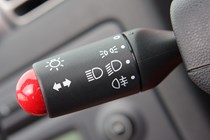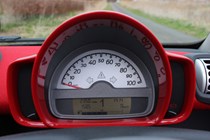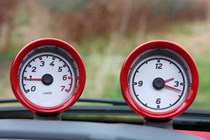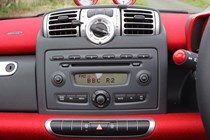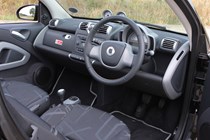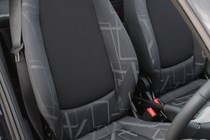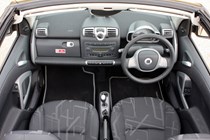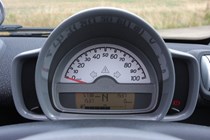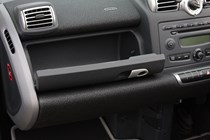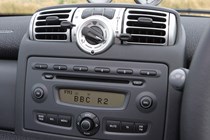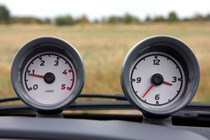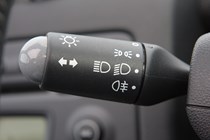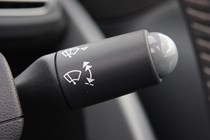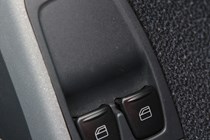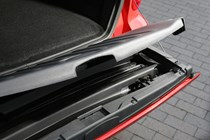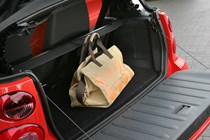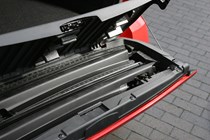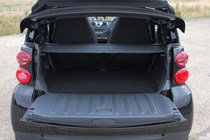
Smart Fortwo Cabriolet engines, drive and performance
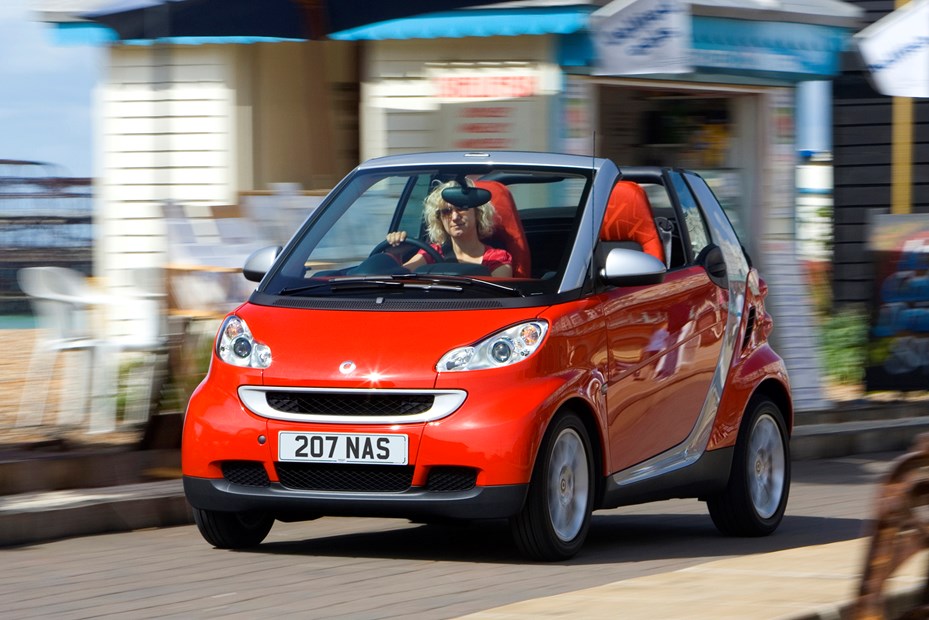
Although the Fortwo has a small and characteristic engine, it’s a different one to that used in the previous generation. The new 1.0-litre engine is more powerful than before and available with either 61bhp, 71bhp or 84bhp – the latter using a turbocharger to boost power. From a standstill, all three feel nippy, but at quicker speeds the 61bhp version can feel decidedly sluggish and 0-62mph takes a leisurely 16.7 seconds.
The turbocharger in the 84bhp model makes a big difference and it manages the same 0-62mph sprint in a more respectable 10.9 seconds. All models are limited to 90mph, which feels more than fast enough in such a small car. Smart has stuck with a similar gearbox to the previous Fortwo. Although it’s still semi-automatic and available with steering wheel-mounted paddles, it’s now smoother and only has five gears, where it previously had six.
There can still be a delay in the gearchange under heavy acceleration, but at higher speeds there is less jerkiness. Top of the range is the Brabus (from February 2008) with 98bhp. Its 0-62mph time is only 9.9 seconds – not really impressive when compared to most hot hatches – but it’s very rapid up to around 40mph. Coupled with its sportier set-up, it’s a blast to drive.
In November 2008, both the 61bhp and 71bhp engines were revised and renamed micro hybrid drive (or mhd for short). The name is actually slightly misleading as there’s no electric motor involved, instead it’s actually just a stop/start system that switches off the engine when the vehicle’s speed falls below 5mph, for example when approaching traffic lights.
As a result fuel economy increases by more than 5mpg to 66mpg while CO2 emissions drop too – although with no difference in road tax rates. For outright economy though, the cdi leads the way. Introduced in mid-2009, this little 45bhp engine may not be especially quick, but it is able to return an amazing 86mpg, making it the most economical car available.
It also emits just 88g/km of CO2, meaning it’s free to tax and incredibly green. In October 2009 it was upgradded to 54bhp, cutting the 0-62mph to 16.8 seconds – three seconds quicker than before. Economy suffers somewhat, but is still 83mpg.
Power steering isn’t standard on any model – even the top of the range Brabus – and although it’s never particularly heavy, it can feel hard work when trying to get out of tight parking spaces. However, in town, the Fortwo is in its element. It can nip in and out of slow moving traffic with ease, helped by good all round visibility, while a tiny turning circle makes tight manoeuvres – such as three-point turns – a doddle.
Out of town, the Fortwo corners fairly well, resisting body roll and remaining composed during sudden changes of direction. However, it’s the strange steering which is the main criticism. On country lanes it can feel nervous in corners while the steering weights up and feels numb – not exactly reassuring. There’s also a shortage of front end grip which is especially noticeable in the wet and the brakes require a real shove to get decent stopping power.
They aren’t very progressive either. Along with the sluggish gearbox, these shortcomings make driving the Smart smoothly very difficult. On the plus side, ESP stability control is standard on all models. The top model from February 2008 is the Brabus. It gets a range of upgrades designed to make it a sharper drive: the gearbox is upgraded so it changes faster and there’s firmer suspension for flatter cornering.


